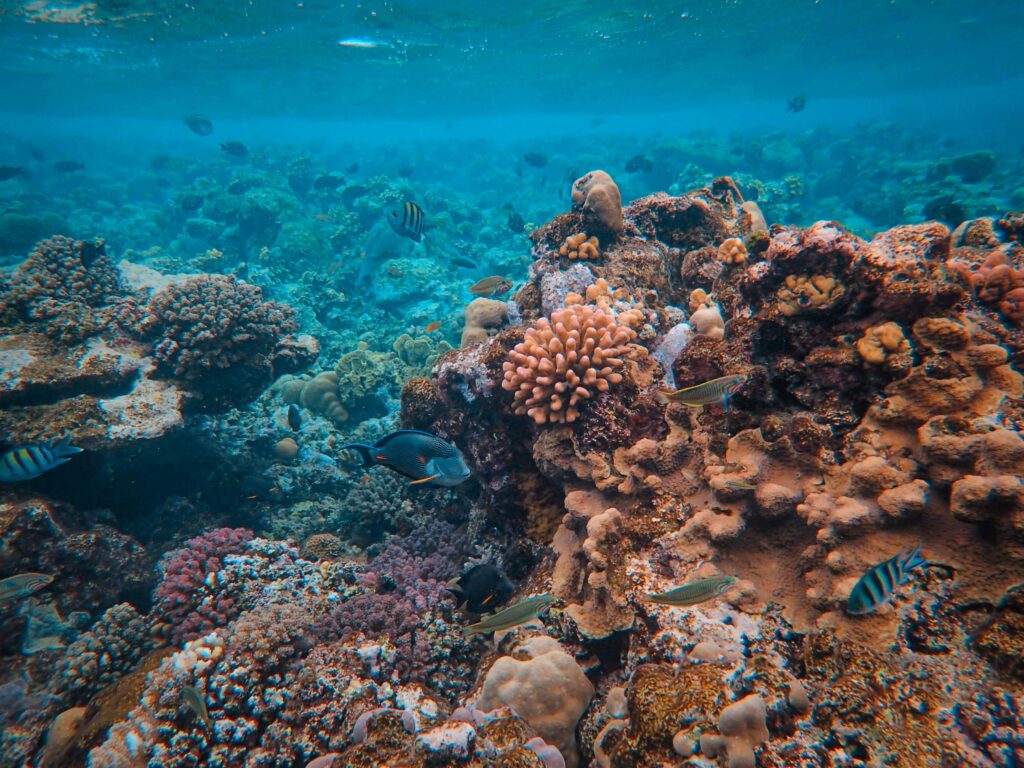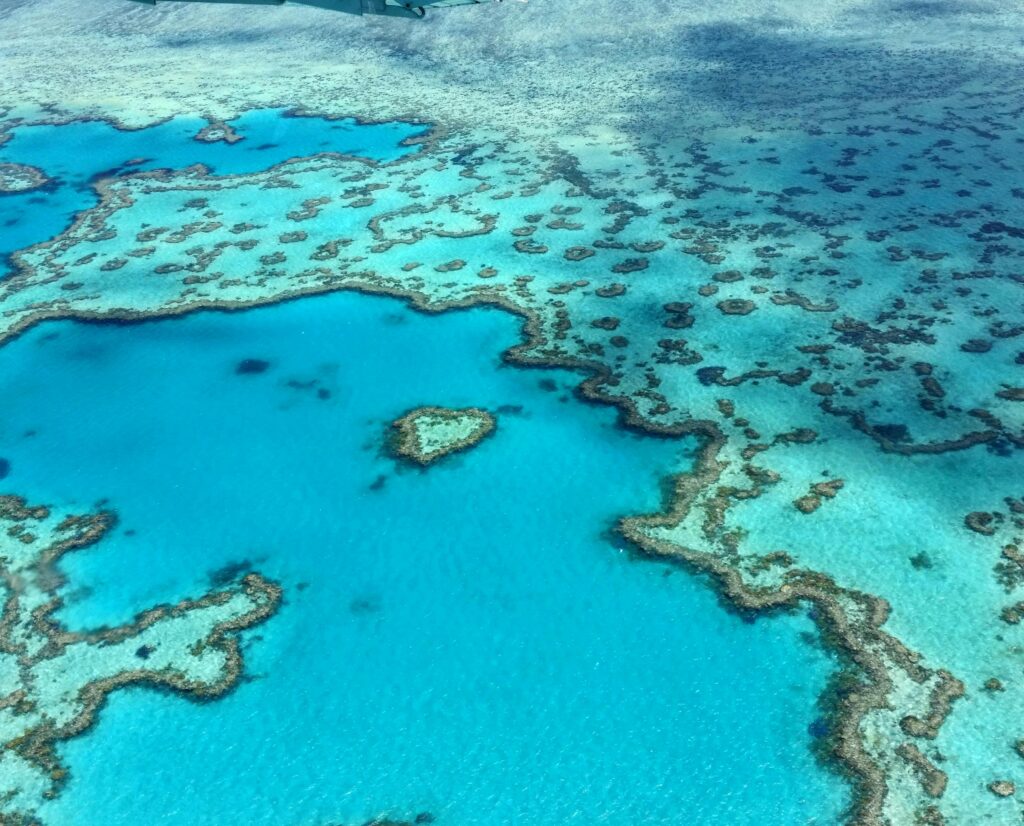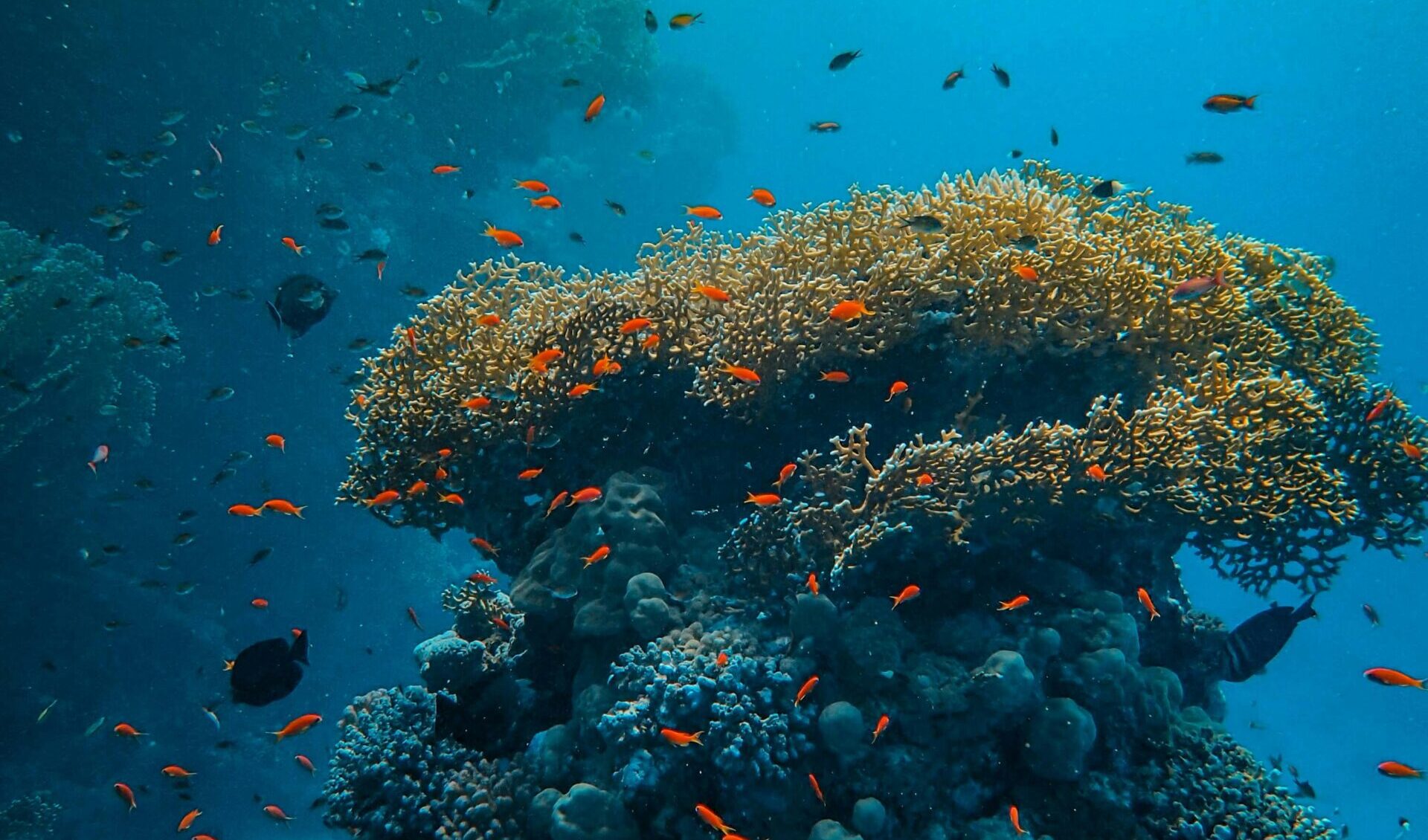The Great Barrier Reef (GBR) is the largest coral reef system on Earth, located in the Coral Sea off the coast of Queensland, Australia. It is composed of 2,900 individual reefs and around 900 islands, stretching over 2,300 kilometers (1,430 miles) and covering approximately 344,400 square kilometers (133,000 square miles).
This natural wonder is often referred to as the largest living structure on the planet and is so vast it can be seen from space. It is home to an incredibly diverse range of marine species, making it one of the most important ecosystems in the world. Due to its ecological significance, the Great Barrier Reef was designated a UNESCO World Heritage Site in 1981 and is considered one of the Seven Natural Wonders of the World.
Formation & Geological History
The Great Barrier Reef was formed over 500,000 years, with its current structure estimated to be between 6,000 and 8,000 years old. The formation of the reef is a result of coral polyps, tiny marine animals that secrete calcium carbonate, gradually building limestone structures. Over millennia, layers of coral skeletons have accumulated, forming vast reefs.
Key Geological Events in the Reef’s History:
🔹 250 million years ago – Ancient corals started forming reef structures in Australia.
🔹 20,000 years ago – The last Ice Age caused sea levels to drop by over 120 meters (390 feet), exposing coral reefs to air, which led to their death.
🔹 6,000–8,000 years ago – Rising sea levels after the Ice Age allowed new coral reefs to grow over the submerged limestone platforms.
🔹 Present Day – The reef continues to evolve as coral colonies grow, die, and rebuild.
Biodiversity & Marine Life
The Great Barrier Reef is one of the most biologically diverse ecosystems on Earth, providing habitat for more than 9,000 marine species. Major Marine Species Found in the Reef

🐠 Fish
- Over 1,500 species of fish, including:
- Clownfish (Amphiprioninae) – Made famous by Finding Nemo.
- Parrotfish (Scaridae) – Essential for coral health as they eat algae on reefs.
- Giant Trevally (Caranx ignobilis) – A powerful predator.
🦈 Sharks & Rays
- Over 134 species of sharks and rays, including:
- Whale Shark (Rhincodon typus) – The world’s largest fish.
- Great Hammerhead Shark (Sphyrna mokarran).
- Manta Rays (Manta birostris) – Known for their large wingspan.
🐢 Sea Turtles
- Six of the world’s seven species of marine turtles inhabit the reef:
- Green Sea Turtle, Loggerhead, Hawksbill, Leatherback, Olive Ridley, and Flatback.
- These turtles have existed for over 100 million years and use the reef for feeding and nesting.
🦀 Crustaceans & Mollusks
- Over 4,000 species, including:
- Giant Clams (Tridacna gigas) – Can grow up to 1.2 meters (4 feet).
- Spiny Lobsters & Crabs.
🐋 Whales & Dolphins
- 30+ species, including:
- Humpback Whales – Migrate from Antarctica to breed in warm waters.
- Dwarf Minke Whales – Often seen in the reef’s northern regions.
- Bottlenose Dolphins – Social and intelligent marine mammals.
🌿 Seagrass & Mangroves
- 15 species of seagrass, forming critical feeding grounds for dugongs and turtles.
- Mangrove forests along the coastline provide a breeding habitat for fish and protect shorelines from erosion.
🪸 Corals
- Over 400 species of coral, including:
- Hard corals (Scleractinia) – The main reef builders (e.g., staghorn and brain corals).
- Soft corals (Alcyonacea) – More flexible and vibrant species.

Economic Importance
The reef generates over AUD $6.4 billion per year for the Australian economy, primarily from tourism, fishing, and scientific research. It supports over 64,000 jobs.
Tourism & Activities
🌊 Scuba Diving & Snorkeling – Experience the underwater world up close.
🚤 Glass-Bottom Boat & Semi-Submarine Tours – For non-divers.
🐋 Whale Watching – Best from June to November.
🏝 Island Resorts & Eco-Lodges – Including Whitsunday Islands and Lizard Island.
🎣 Fishing & Boating – Regulated to prevent overfishing.
Best Time to Visit
- May–October (Dry Season): Best visibility for diving and snorkeling.
- November–April (Wet Season): Warmer temperatures but higher risk of stingers (box jellyfish).
Environmental Threats
Despite its beauty, the Great Barrier Reef is under serious threat from various environmental challenges:
🌡️ Climate Change & Coral Bleaching
- Coral bleaching occurs when ocean temperatures rise, causing corals to expel the algae (zooxanthellae) that give them color and nutrients.
- Mass bleaching events: 1998, 2002, 2016, 2017, and 2020.
🛑 Crown-of-Thorns Starfish (COTS) Outbreaks
- These starfish feed on coral, and population explosions have devastated parts of the reef.
🚢 Pollution & Coastal Development
- Agricultural runoff increases nitrogen levels, leading to algal blooms that suffocate coral.
- Plastic waste & oil spills threaten marine life.
🐠 Overfishing & Illegal Fishing
- Disrupting the food chain and harming populations of vulnerable species.
Conservation Efforts & Future Outlook
🔬 Restoration & Research
- The Great Barrier Reef Marine Park Authority (GBRMPA) regulates activities to protect the reef.
- Scientists are working on coral breeding programs and assisted coral evolution.
💰 Government & Global Initiatives
- In 2018, the Australian government committed $500 million for reef protection.
- UNESCO and environmental organizations push for reducing carbon emissions.
🛑 Sustainable Tourism
- Eco-friendly diving & boating practices.
- Education on responsible reef interactions.
The Great Barrier Reef is one of Earth’s greatest natural wonders, showcasing unparalleled marine biodiversity and ecological importance. However, climate change, pollution, and human activities threaten its future. Conservation efforts are crucial to preserving this magnificent ecosystem for generations to come.















